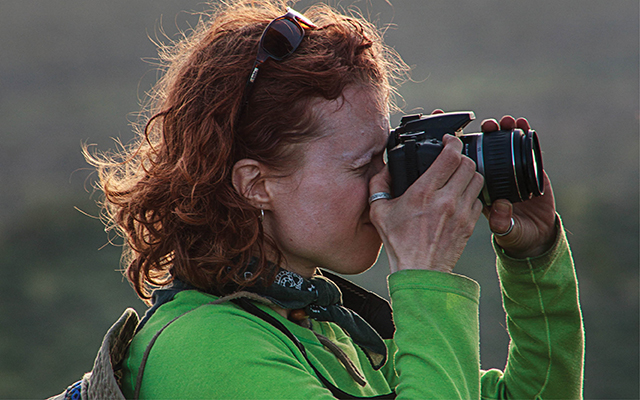It happens to all of us. We wake up one day and realize that we have been here before — just like yesterday and the day before that. Today’s experience is destined to be the same as all the others: safe, comfortable and boring.
It turns out that we need new experiences to be vital and happy, something I explore in Don’t Miss Your Life, my book on engaged experience. Science has demonstrated that our brains release the feel-good chemical dopamine in reaction to positive experiences. And one study has shown that the same type of dopamine release is triggered in response to the mere expectation of a new experience. Researchers call this anticipatory release of dopamine the “exploration bonus,” and it suggests that, neurologically and biochemically speaking, novelty is its own reward.
Connections between brain neurons, called dendrites, develop in response to new experiences, and they shrink or vanish altogether if they’re not stimulated with new information. Active learning helps preserve and strengthen these neural connections. It also promotes the creation of new neural connections that didn’t exist before. This ability of the brain to build new dendrite networks — to literally make itself bigger — is called plasticity.
In The Brain That Changes Itself, Norman Doidge notes that “neglect of intense learning leads plasticity systems to waste away.” (For more on the benefits of exploring new activities, read “The Power of Curiosity.”)
So if novelty feels good and does good things for us, why do we usually stick with what we know? Why do we accept all those safe, comfortable, boring days? The answer lies deep in the emotional center of the brain, called the amygdala.
The amygdala perceives the unknown (including the prospect of an unfamiliar experience) as potentially threatening, and it sends out alarms that drown out rational thought. This means that we often overestimate the cost of risk and underestimate the consequences of playing it safe.
“People so often stop growing and even actively resist change,” explain psychologists Tom Pyszczynski, PhD, Jeff Greenberg, PhD, and Jamie Goldenburg, PhD, in an essay in the Handbook of Self and Identity, “because they cling to the conceptions of the world and themselves that provided them maximum safety and security.”
An overactive security reflex triggers all manner of reflexive fears to pop up, but we can override it. Here are some practical ways to build the life skills necessary to pursue new experiences — and really start living:
Do a Risk Reality Check
When contemplating the unknown, the amygdala tends to go into overdrive: Will we fall off that rock-climbing wall and look foolish? Will the pottery we make in class be laughably bad? Will we look like a chump in dance class when we can’t master the tango?
When you feel a sense of impending disaster at the thought of a new experience, step back, identify what’s really happening, and assess the actual risks involved. Say to yourself: “Oh, yep. I know what’s happening here. My brain wants me to stay safe. But, really, what is the worst that could happen? A bruised ego? I’ll leave my comfort zone?” Stay with this rational, questioning appraisal and begin to focus on the value of the experience. “What do I have to gain by participating in __________ ?”
Your first awkward rock-climb and off-center clay pot are survivable lessons on the way to improving your skills and becoming more involved in participant experiences. In fact, making progress along the way is part of the fun and gratification: You gradually feel more competent and confident, and can revel both in your willingness to stretch and in how far you’ve come.
Build Your Venture Aptitude
Quieting your fears and engaging in new experiences takes what I call “venture aptitude” — a specific set of cultivatable skills and attitudes that prime you to dive into participant experiences. Here they are:
- Do it to do it. Doing something just for the experience of doing it quiets performance anxiety and the results-seeking mindset. When you approach an experience with this attitude, there is no harm to your self-worth because your objective — the pursuit of knowledge, challenge or enjoyment — is egoless.
- Advance into the fear. You inflame fear by running from it, and you reduce it with every step that you take straight at it. As Mark Twain once said, “Do the thing you fear the most, and the death of fear is certain.” Twain himself was deathly afraid of public speaking, yet became a great raconteur in public.
- Make the unknown more knowable. Knowledge trumps irrational fears. Talk to others who have participated in experiences you want to engage in. Do research. Ask a friend with similar experience to show you some basic skills. Before you commit to a class, call the teacher and find out what will be expected and what the class atmosphere is like.
- Don’t look at the mountaintop. Big goals can be intimidating and overwhelming — and can stop us from saying yes to a new experience before we even get started. Break down big goals (running a 10k, acting in a neighborhood play) into small, incremental goals (running around the block, taking a beginner’s voice class) to build competence and confidence over time. Small successes will give you the momentum you need to continue.
- Dabble. If it’s been a while since you thought about active ways to spend your leisure time and you don’t know which participant experiences will most pique your interest, try several different classes or events to see which ones excite you the most. Ask your friends and neighbors what leisure activities they like. Look online for cool seminars and classes in your area that you could check out.
Whatever you do, don’t delay. The most important thing is that you get started. Treat life as a big experiment, as the scientists do. You’re simply trying to find out about things, trying to see what works. Judge your life by how much you try, not by the results. That removes the fear and alibis and puts you squarely in the center of when we are at our happiest, when we’re absorbed in engaging leisure experiences.
Unform Your Habits
In an episode of the hit TV show Seinfeld, George Costanza decides to do something radical to change his loser status: From now on, he will do exactly the reverse of his normal inclination. “If every instinct you have is wrong, then the opposite would have to be right,” his friend Jerry suggests, and George can’t disagree. In the course of going against his habitual patterns, George winds up landing a girlfriend and working for the Yankees — unthinkably big successes for George under normal circumstances.
While such a dramatic course reversal might not be advisable in the real world, doing a modified, lower-stakes version of the “Costanza Correction” can help you break out of your comfort zone. It can enliven your daily routine, and prime you to say yes to new experiences.
Some small ways to do the Costanza:
- Take a different off-ramp on your commute home.
- Walk in a different direction on your lunch break.
- Get coffee at a café you’ve never been to.
- Buy a vegetable you’ve never eaten and make it for dinner.
This article originally appeared as “Out of the Ordinary.”




This Post Has 0 Comments